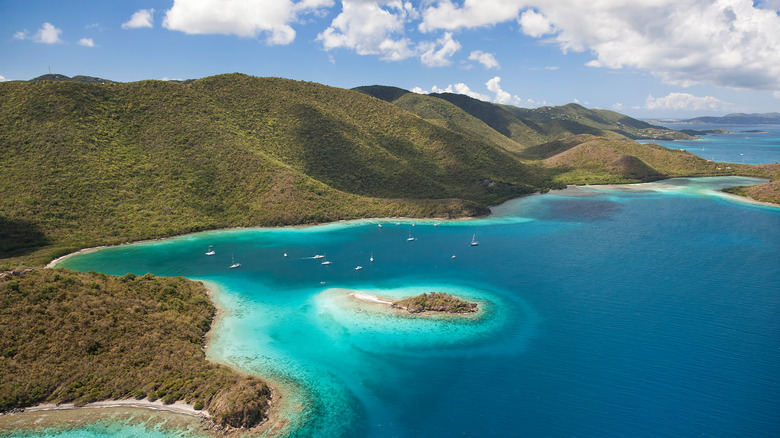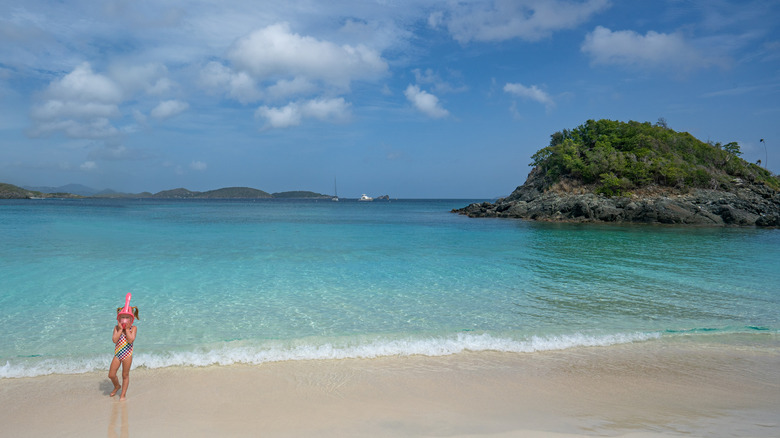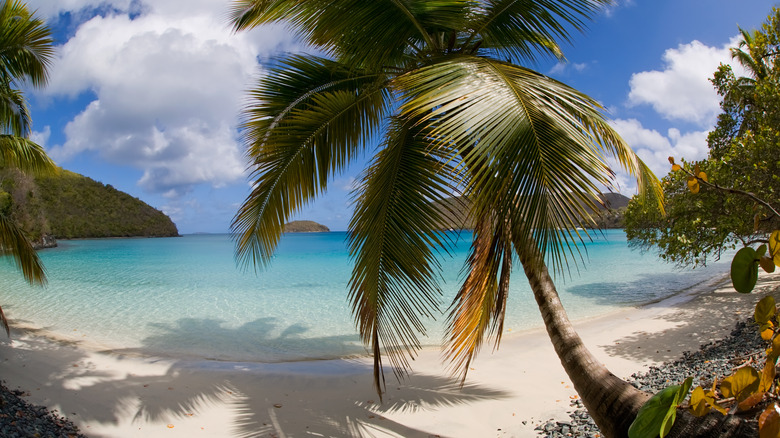Why This Gorgeous US National Park Is Considered One Of The Most Dangerous
People are drawn to National Parks for a number of reasons. It might be to get away from the hubbub of the city or to unwind from the stresses of modern life. Some are attracted by the healthy possibilities of hiking or other outdoor activities. Others just want to get some fresh are and experience the embarrassment of natural riches that the United States has to offer. And why wouldn't you? The nation's 63 national parks are home to some of the planet's most remarkable natural sights, from the incredible vastness of the Grand Canyon to the grandeur of Yosemite's mountains, glaciers, and waterfalls.
The majority of visits pass without incident but the thing about nature is that it can be totally unforgiving towards the unprepared, the unwary, or the foolhardy. According to data released by the National Park Service, over 2,000 people met their end in national parks between 2014 and 2021. Those fatalities were due to a wide range of causes, from falls and deadly encounters with wildlife to the leading identified cause of death, motor vehicle accidents. Some cases are downright gruesome. In 2016, a man perished when he fell into a hot spring in Yellowstone Park, and his remains were mostly dissolved by the acidic waters. Yet while Lake Mead Recreational Area ranked top for that period with the total amount of deaths, there is a surprising entry amongst the most dangerous national parks in the United States: The Virgin Islands National Park.
How many visitors die in the Virgin Islands National Park each year?
The Virgin Islands National Park looks a lot like paradise: Palm trees, sparkling white beaches, crystal clear waters, coral reefs teeming with life. Situated on the third largest island in the U.S. Virgin Islands, Saint John, there is a great deal of it, too. The national park covers around two-thirds of the entire island, preserving its bounteous natural wonders, and its beaches often get ranked among the best and most beautiful in the world. Yet there is also a darker side to this Caribbean idyll: the Virgin Islands National Park has gained a reputation as one of the most dangerous in the United States.
The U.S. Virgin Islands are a popular destination for sun-seekers. Flights from the mainland United States take around 5 hours on average and many airlines offer discounted tickets, making the archipelago an attractive option for vacationers who want the perfect Caribbean getaway. Out of nearly 3 million visitors to the islands each year, around 360,000 head to Saint John and the Virgin Islands National Park.
Unfortunately, not all of them make it back home again safely. Between 2010 and 2020, 22 visitor fatalities were recorded in the park, equalling around 6 deaths per million visitors. That might not seem like a big number, but it is a figure that makes the Virgin Islands National Park statistically more dangerous than more usual suspects like Mount Rainier (4 deaths per million visitors) and Death Valley (3.4 deaths per million). It's enough
Why is it so dangerous?
Considering that the Virgin Islands National Park covers two-thirds of Saint John and over 40% of it is underwater, it is understandable that the chief cause of visitor deaths is drowning. Of the 22 fatalities recorded between 2010 and 2020, nine were from incidents in the water. The age of the victims may also play a factor because the U.S. Virgin Islands are a popular stop-off for cruise liners, with the average age of passengers around 47 years old. Overall, five of the 22 recorded deaths in the park over the 10 years involved heart attacks or other medical conditions. In 2013, a 55-year-old man from Ohio who was visiting his daughter in Saint John was suspected of suffering a heart attack while snorkeling in Whistling Cay.
Incidents recorded by the National Park Service (NPS) go back much further than 2010. In July 1991, a man from Texas drowned while sailing in Coral Bay, apparently while trying to recover a dinghy that had come loose in choppy waters. Nine years later, a New Jersey resident died while snorkeling around Watermelon Cay.
Naturally, the ocean is an unpredictable force and the NPS advises visitors to the Virgin Islands National Park to heed yellow and red flags, which indicate that conditions may be dangerous with hazards such as rip currents and big waves. Provided that you take care, however, this stunning national park is a perfect destination for beach lovers.


